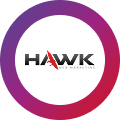Artificial intelligence tools like ChatGPT and Claude are totally shaking up how people find brands. Most companies? They have no idea they’re missing out on millions of potential customers.
When someone asks an AI chatbot for product recommendations or industry insights, these systems decide which brands to mention based on specific signals they’ve learned from across the internet. Building strong brand signals for LLMs means creating the right digital footprint so AI systems consistently mention and recommend a brand when relevant topics come up.

The shift is happening fast. Research shows that half of all search engine traffic could disappear by 2028 as people turn to AI-powered tools for answers instead of traditional search engines.
Companies that understand how to build authority with these AI systems will capture attention. Their competitors? They risk fading into the background.
Smart businesses are already adjusting their strategies to fit how large language models process information. It’s not just about SEO anymore—now it’s about entity recognition, structured data, and consistent brand mentions across trusted platforms.
Understanding Brand Signals and Large Language Models

Brand signals now determine how AI systems like ChatGPT and Gemini present companies to users. This creates a new landscape where traditional SEO tactics just don’t cut it.
These digital footprints shape AI-generated responses in ways that differ dramatically from search engine optimization. It’s a whole new ballgame.
What Are Brand Signals?
Brand signals are digital markers that tell AI systems what a company represents and how it should be portrayed. Unlike traditional SEO keywords, these signals include brand mentions, sentiment patterns, and contextual associations across the web.
A brand LLM embodies company identity and values, but the signals that feed into these systems come from everywhere. Social media posts, news articles, customer reviews, and website content all contribute to the signal mix.
Key brand signal types include:
- Mention frequency and context
- Sentiment associations
- Industry positioning
- Product or service descriptions
- Leadership and company culture references
AI systems don’t just count mentions like search engines count backlinks. They analyze the meaning behind those mentions, building a more nuanced brand profile that can make or break your digital reputation.
How LLMs Interpret Brand Signals
LLMs process brand signals through complex pattern recognition that goes way beyond keyword matching. When ChatGPT or Gemini encounters a brand query, it synthesizes thousands of data points to generate contextually appropriate responses.
LLMs offer empathetic and dynamic interactions that feel conversational rather than scripted. Brand signals have to support authentic, varied representations across different contexts.
LLM interpretation factors:
- Context clustering: Similar brand mentions grouped by topic
- Sentiment weighting: Positive and negative associations balanced
- Recency bias: Newer information often carries more weight
- Authority recognition: Trusted sources influence brand portrayal
The interpretation process shapes a kind of “brand personality” within the model. Companies with consistent, positive signals across multiple contexts usually get more favorable AI-generated responses.
Generative AI vs. Traditional SEO
Traditional SEO focuses on ranking websites in search results. LLM optimization targets how brands appear in AI-generated answers, which totally changes content strategy requirements.
SEO vs. LLM Optimization:
| Traditional SEO | LLM Optimization |
|---|---|
| Keyword density | Contextual meaning |
| Link authority | Signal consistency |
| Page rankings | Response inclusion |
| Traffic metrics | Mention quality |
Marketing teams now pursue meaning intelligence beyond basic LLM approaches to understand brand perception. This shift means you need to see how AI systems actually present your brand instead of just tracking search positions.
LLMs don’t show users a list of links to choose from. They give direct answers—your brand is either in there or it’s not. That’s a lot more pressure on your signals than traditional ranking factors ever were.
Key Brand Signals That Influence LLM Visibility

Large language models evaluate brands through a bunch of digital signals that indicate authority and trustworthiness. These range from traditional backlinks to modern entity recognition patterns that help AI systems figure out which brands deserve to be visible.
Backlinks and Domain Authority
Backlinks are still foundational for brand credibility in LLMs, but it’s not just about counting links anymore. Domain authority acts as a trust multiplier that amplifies other brand signals.
Quality over quantity is the new mantra. A single link from a high-authority site can outweigh dozens from low-quality domains. Brand signals influence how LLMs rank and surface brands in their training data interpretation.
LLMs analyze the context surrounding backlinks instead of just their existence. Links in relevant content about industry topics signal expertise far better than random directory listings.
The anchor text diversity in backlinks matters. Natural variations—company names, branded terms, descriptive phrases—create stronger entity associations than repeating the same keywords over and over.
Brand Mentions and Entity Recognition
Entity recognition lets LLMs connect brand names with specific industries, products, and expertise. Consistent mentions across platforms reinforce these neural pathways.
Unlinked mentions are surprisingly powerful in LLM training data. When brands get discussed without a link, AI systems still register those references as credibility signals.
Frequency and context of mentions matter more than just where they come from. Regular mentions in industry conversations show active market presence.
Co-occurrence patterns help LLMs understand brand relationships. Brands that show up alongside industry leaders or in expert roundups inherit credibility by association. Modern AI models look beyond backlinks to mentions and consistency when evaluating brand authority.
Reputation and Trust Indicators
Online reputation is a big deal for LLMs. Review platforms, social sentiment, and trust signals all combine to create a comprehensive profile.
Review aggregation sites like Google Reviews, Trustpilot, and industry-specific platforms provide structured data that LLMs can easily interpret. Higher ratings usually mean more visibility in AI responses.
Social media sentiment analysis is another factor. Positive discussions and engagement signal brand health and customer satisfaction.
Trust badges and certifications from recognized organizations are clear authority markers. Industry associations, security certifications, and awards give objective credibility that AI systems value.
The consistency of reputation signals across platforms matters. Conflicting information or gaps in your reputation can confuse LLMs and lower your chances of being recommended.
Content Depth and Expertise
Content depth is how you show off expertise that LLMs notice and reward. Covering topics thoroughly establishes topical authority.
Long-form content that really digs into a subject provides rich training data for AI systems. Articles over 2,000 words tend to score higher—assuming they’re actually good, of course.
Technical accuracy and citations within content help LLMs verify information quality. Well-researched pieces with proper attribution signal expertise and reliability.
Content freshness and updates keep you relevant, especially in fast-changing fields. Regularly refreshed content tells AI you’re on top of your game.
Semantic topic clustering around your expertise areas builds stronger associations. Covering related subtopics helps LLMs see the full scope of what your brand knows.
Optimizing Your Digital Footprint for LLMs
Your digital footprint probably needs a serious update to work with AI systems. LLMs rely on clean data structures, proper indexing, and consistent brand signals everywhere to figure out what your brand stands for.
Structured Data and Schema Markup
Think of structured data as speaking AI’s native language. Add schema markup to your website and you’re basically giving LLMs a cheat sheet.
Organization schema is crucial. It tells AI exactly who you are, what you do, and how you’re linked to other entities online.
Key schema types to use:
- Organization: Company name, logo, contact info
- Product: Service descriptions, pricing, reviews
- LocalBusiness: Location data, hours, services
- Article: Content topics, authors, publication dates
LLMs focus on concepts and relationships when processing information. Schema markup helps build those connections automatically.
Google Search Console shows which structured data is working. Check the “Enhancements” section now and then to spot markup errors that could throw off AI systems.
Indexability and Technical SEO
If search engines can’t crawl your content, LLMs probably can’t either. Your technical setup determines whether AI systems can even see your brand info.
Start with the basics. Make sure your robots.txt file allows crawling of important pages. Your XML sitemap should include all brand-relevant content.
Page speed is more important than ever. LLMs often pull from sites that load quickly and deliver a good user experience. Compress images, minimize code, and use content delivery networks—yeah, it’s a hassle, but it matters.
Tools like SEMrush and Ahrefs can help you spot crawling issues that block AI access. Look for:
- Broken internal links
- Missing meta descriptions
- Duplicate content
- Server errors
Mobile optimization is non-negotiable. Most web traffic is mobile, and LLM training data reflects that.
Cross-Platform Brand Consistency
LLMs learn about your brand from every mention across the internet. Inconsistent info confuses these systems and weakens your brand signals.
Your brand name should be identical everywhere. If you’re “ABC Marketing” on your site, don’t be “ABC Marketing Solutions” on LinkedIn or “ABC Mktg” on Twitter.
Create a brand style guide that covers:
- Exact company name spelling
- Logo usage guidelines
- Brand description templates
- Key messaging phrases
Social media profiles need special attention. LLMs often reference these when describing brands. Your bio, company description, and contact info must match your website.
Third-party directories are important too. Check your listings on Google My Business, Yelp, and industry-specific platforms. Inconsistent messaging across platforms can lead to AI systems mixing up your brand details.
Update old press releases and news articles if you can. These show up in LLM training data and can spread outdated info about your company.
Boosting Brand Visibility in Generative AI Results
Modern AI models look beyond backlinks to assess credibility through mentions, consistency, and reputation. These signals directly shape how LLMs surface companies in AI-generated answers.
Earning Citations in Reputable Sources
Getting mentioned by trusted publications is still the gold standard for brand visibility in AI systems. AI platforms synthesize answers based on structured, high-quality data instead of just ranking individual pages.
Pitch original research and industry insights to journalists. Earned mentions carry more weight than paid placements because LLMs can spot authentic editorial coverage.
High-Impact Citation Sources:
- Industry trade publications
- Local news outlets
- Research institutions
- Expert roundups and interviews
Guest blogging on authoritative sites helps build topical authority. But don’t just churn out promos—offer real value.
Award submissions and industry certifications create more citation opportunities. These external validations strengthen brand signals everywhere.
Leveraging User Engagement and Reviews
Brand sentiment and reviews serve as trust indicators that influence AI recommendations. LLMs interpret positive user feedback as credibility markers.
Stay on top of review management across platforms like Google, Trustpilot, and industry-specific sites. Response rates and engagement levels are just as important as star ratings.
Key Engagement Metrics:
- Average review scores
- Response time to customer inquiries
- Social media interaction rates
- Website dwell time and bounce rates
User-generated content offers authentic brand mentions that AI systems pick up on. Encourage customers to share their experiences—those natural citations are gold.
Keep an eye on brand sentiment with social listening tools. Negative mentions can hurt visibility in AI answers if you let them pile up.
Aligning Content With AI Preferences
AI platforms don’t rank pages but synthesize information from structured, authoritative content. Companies need to format information for machines, not just people.
Clear headings, bullet points, and data tables make it easier for LLMs to pull out the good stuff. FAQ sections that answer common questions? Those are gold for AI responses.
AI-Friendly Content Elements:
- Structured data markup
- Clear topic clustering
- Factual statements with supporting data
- Consistent brand terminology
Maintaining topic authority means covering subjects thoroughly. Shallow content gets ignored, while deep dives tend to earn those all-important citations.
Regular content updates help keep search rankings from slipping. LLMs really want the most accurate, up-to-date info when they answer questions.
Cross-platform consistency boosts brand signals. Using the same descriptions, contact info, and messaging everywhere makes it easier for AI systems to recognize and trust your brand.
Tools and Metrics for Tracking Brand Signals in LLMs
Tracking brand performance in AI systems calls for a different approach than old-school SEO analytics. Specialized monitoring tools and new metrics help businesses figure out where they stand in the world of ChatGPT, Perplexity, and friends.
Monitoring AI Mentions and Citations
Specialized LLM monitoring tools now track brand mentions across AI platforms. These tools check when and how your brand shows up in AI-generated answers.
Key AI Monitoring Platforms:
- Profound: Enterprise-level analytics for multi-LLM tracking
- Otterly AI: Small business focused monitoring solution
- Peec AI: Daily visibility alerts across major AI models
They track citation frequency, sentiment, and the context of brand mentions. Monitoring covers ChatGPT, Claude, Gemini, and Perplexity responses.
Most platforms offer automated prompt testing. They run the same queries over and over to see if your brand pops up—no more guessing.
Competitor tracking is baked in, too. You can see which brands are dominating AI queries in your field.
Evaluating Brand Authority Metrics
Brand authority in AI systems is all about source credibility and citation patterns. LLM visibility scores pull together multiple factors into one handy metric.
Core Authority Metrics:
| Metric | Description | Impact Level |
|---|---|---|
| Citation Frequency | How often AI models mention the brand | High |
| Source Authority | Quality of websites that reference the brand | High |
| Context Accuracy | Correctness of brand information in AI responses | Medium |
| Sentiment Score | Positive/negative tone of brand mentions | Medium |
Traditional SEO tools like Ahrefs and SEMrush still matter. They track the content that ends up feeding these AI models—strong domains and good backlinks help a lot.
Google Search Console offers a peek at how your content performs in search. Since many AI models pull from top-ranking sites, this data helps you predict where you’ll show up.
Analyzing Search and AI Referral Data
AI platforms are starting to send real traffic back to brand websites. Keeping an eye on referral data shows the actual impact of your AI visibility work.
Google Search Console now includes some AI-driven traffic sources. Check the reports for referrals from chat interfaces and voice assistants.
Ahrefs and SEMrush can show branded search volume increases. If AI mentions are working, you’ll usually see more people searching for your brand within a few weeks.
Set up UTM tracking for AI-focused campaigns. That way, you’ll know which optimization efforts actually bring in visitors and conversions.
Traffic Analysis Framework:
- Watch for direct traffic bumps after AI mentions go up
- Track branded keyword search volume
- Measure time-on-site for AI referral visitors
- Calculate conversion rates from AI-driven visits
Advanced tracking strategies include monitoring for brand name searches after AI interactions. People often look up brands they first discover through AI.
Some AI users convert better than traditional search visitors. The data will show which platforms bring in the highest-quality traffic.
Developing a Future-Proof Brand Strategy for LLMs
Treat LLM optimization like a marathon, not a sprint. It’s about building systems that can flex with model changes and keep brand signals steady across all AI touchpoints.
Continuous Content Improvement
What works today might flop tomorrow if a new model launches. Brands need a process for keeping materials fresh and relevant.
The best bet? Create living documents that get regular updates. Refresh product descriptions, company overviews, and key messaging every quarter.
Try out different content formats to see what sticks with various LLMs. Some models really love bullet points, while others seem to favor a more conversational style.
Track which content pieces drive the most brand mentions in AI answers. Double down on what works, and don’t be afraid to retire stuff that just isn’t pulling its weight.
Answering common questions directly gives brands a better shot at showing up in AI-generated responses. Skip the fluff and focus on clarity.
Navigating AI Search Updates
LLM updates can show up out of nowhere. One day your brand’s everywhere, the next it’s just… gone.
Don’t panic and rip everything up. Instead, build flexible content systems that work across different AI platforms.
Diversify your brand visibility across ChatGPT, Gemini, Perplexity, and others. If one changes, you’ve still got backup.
Check brand mentions across LLMs every week. Set up alerts so you catch sudden drops before they become a real problem.
Document what works for each platform—LLMs have their own quirks when it comes to citing and presenting info.
Building Reputation Currency
Think of brand mentions in LLMs as a kind of reputation currency. Every positive mention is a deposit; negative or missing mentions are withdrawals.
Consistency across platforms makes your reputation stronger. If LLMs see the same key messages everywhere, they’re more likely to include you in answers.
Try to become the go-to source on topics in your industry. LLMs love brands that show real expertise and authority.
Invest in knowledge graphs and structured data so AI can get a better handle on your brand’s connections and context.
Build relationships with publications and websites that LLMs reference a lot. Getting mentioned in their data sources pays off over time.
Frequently Asked Questions
Building brand signals for LLMs means understanding how AI systems spot and reference brands in their answers. Here are some practical questions about establishing authority, keeping your messaging tight, and avoiding the usual mistakes that tank visibility.
How can I make an LLM recognize my brand like it’s a morning cup of coffee – essential and familiar?
Brand recognition in LLMs comes from consistent mentions across high-authority sites. The trick is building strong topic-brand associations through digital PR that link your brand to specific topics.
Focus on getting mentioned in respected industry publications. Each mention should use the same brand descriptions and key phrases—repetition teaches AI to connect your brand with the right subjects.
Strengthening third-party authority signals is huge for LLMs. Trusted sites help AI figure out which brands matter in different markets.
Schema markup is surprisingly important, too. It gives LLMs the structured data they need to understand what your brand does.
What sort of digital chit-chat gets an LLM to put my brand on its VIP list?
Real conversations on platforms like Reddit carry a lot of weight with LLMs. Many AI systems trained on Reddit data, so genuine brand discussions there can really boost visibility.
User-generated content—think reviews, forum threads, social posts—shapes how AI systems see your brand’s quality and relevance.
Expert commentary and thought leadership also help. When industry pros reference your brand, it signals authority to AI.
Keep it natural, though. LLMs can spot the difference between authentic recommendations and obvious marketing pushes.
Can I woo an LLM into associating my brand with top-notch quality, or is that just a pipe dream?
Quality associations happen through consistent messaging and authoritative content. Creating quote-worthy content with original stats makes it more likely you’ll get cited as a trusted source.
Original research and data points? They get 30-40% more visibility in LLM answers. Consistently publish valuable insights and AI will start linking your brand with expertise.
Customer testimonials and case studies that show real results help, too. LLMs like referencing these when talking about brand performance.
Third-party validation—awards, certifications, industry recognition—also matters. These carry way more weight than self-promotion.
Is there a secret handshake for getting LLMs to signal boost my brand, or do I need to shout louder?
It’s not about shouting louder—it’s about entity optimization. Develop a comprehensive entity strategy so AI systems know exactly what your brand is and what you do.
Use clear entity definitions and keep your NAP info (name, address, phone) consistent everywhere. Schema markup helps LLMs categorize you correctly.
If you can, get a Wikipedia page. It’s a big deal for brands that meet the notability bar—LLMs reference it all the time.
Quality beats quantity every time. A few high-authority mentions mean more than a bunch of low-quality ones.
If consistency is key, how often do I need to knock on an LLM’s door before it starts wearing my brand’s team jersey?
Consistency matters more than raw frequency. Make sure your brand descriptions and key messages are the same everywhere.
LLMs learn from patterns in their training data. If they see the same info about your brand over and over, they’ll start using it in their answers.
Update your content regularly to stay relevant. Outdated info can make LLMs less likely to reference your brand accurately.
How long it takes? It depends on your authority and the quality of mentions. Well-established brands get picked up faster than newcomers, but it’s different for everyone.
Are there any brand-building faux pas that might make an LLM give my brand the cold shoulder?
Inconsistent brand information across platforms just confuses AI systems. If your company descriptions, contact details, or messaging don’t match up, LLMs might not trust your brand references.
Obvious spam or manipulative content tactics? Those usually backfire with LLMs. These systems are trained to spot and avoid low-quality or overly promotional content that’s missing any real value.
Skipping schema markup and structured data makes life harder for LLMs. Without clear signals about your brand as an entity, AI can have trouble figuring out how to categorize or reference you.
Contradictory information from multiple sources is another headache. If the training data has conflicting details about your company, AI will probably just play it safe and leave you out entirely.


